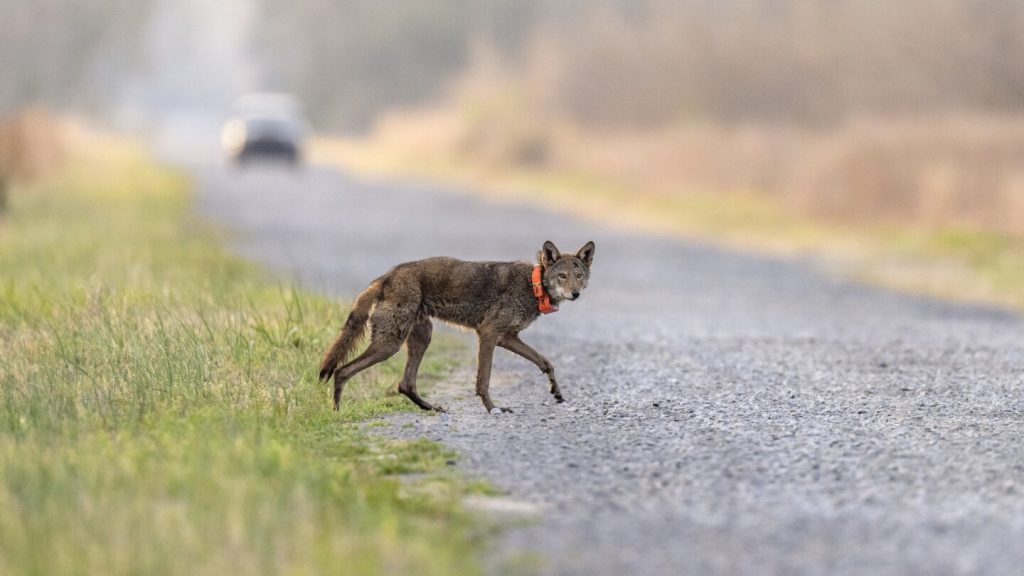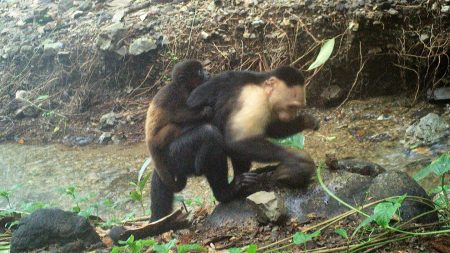The red wolf, America’s unique wolf species, faces a grave threat: not from hunters as in the past, but from vehicular collisions on the roads bisecting their limited habitat. The death of breeding male No. 2444 in June 2024 underscored this danger, highlighting the urgent need for mitigation measures. This incident, occurring on U.S. Highway 64, a major artery cutting through the Alligator River National Wildlife Refuge, resulted in the loss of not only the adult wolf but also the likely demise of his five pups. This highway, a crucial link to the Outer Banks, poses a significant risk to the dwindling red wolf population, estimated to be fewer than 20 in the wild, confined to Alligator River and the nearby Pocosin Lakes National Wildlife Refuge. The loss of a single breeding male represents a devastating 7% decline in the known wild population, emphasizing the precariousness of their existence.
Conservationists have long advocated for modifications to U.S. 64 to enhance red wolf safety. Their efforts have finally yielded a breakthrough with the awarding of a grant from the Federal Highway Administration’s Wildlife Crossings Pilot Program. This funding will support the reconstruction of a 2.5-mile stretch of the highway, incorporating fencing and culverts – small underpasses – to enable safe passage for red wolves and other wildlife, including black bears and deer. This project embodies a dual purpose: reducing human-wildlife conflicts, specifically vehicle collisions and roadkill, and simultaneously bolstering the survival chances of a critically endangered species. The project highlights a growing recognition of the interconnectedness of human safety and wildlife conservation.
Wildlife crossings, implemented with bipartisan support across the U.S. over the past two decades, have primarily focused on human safety. Annual costs associated with collisions with large animals, including fatalities and property damage, reach billions of dollars. The U.S. 64 project marks a significant shift, prioritizing not just collision reduction but also species preservation. This approach aligns with a broader trend in wildlife crossings, where conservation objectives are increasingly taking center stage. The efficacy of specific crossing designs varies depending on the target species. Pronghorn, for example, prefer overpasses, while deer readily utilize both underpasses and overpasses. Canids like gray wolves, coyotes, and presumably red wolves, effectively use culverts 6 to 8 feet in diameter, particularly when coupled with fencing to direct their movement.
Examples of successful wildlife crossings abound, demonstrating their potential to drastically reduce collisions. Along U.S. 30 in Wyoming, strategically placed underpasses and fencing have decreased mule deer collisions by an impressive 81%. Similarly, in Canada’s Banff National Park, a combination of overpasses and underpasses along the Trans-Canada Highway has achieved a remarkable 94% reduction in collisions with ungulates. While the impact of wildlife crossings on preventing extinctions remains less certain, the U.S. 64 project serves as a critical test case. Ambitious crossing projects designed specifically for conservation have recently been completed, including a large overpass in Los Angeles to aid mountain lion connectivity and a vegetated bridge in Brazil for golden lion tamarins, but their long-term success is yet to be determined.
The red wolf, once widespread across the eastern and central U.S., was driven to the brink of extinction and reintroduced to North Carolina in 1987. The population experienced a period of growth, peaking around 120 individuals, before plummeting due to various factors, including vehicle strikes. Studies have shown that collisions accounted for approximately 5% of red wolf mortality annually between their reintroduction and 2022. The U.S. 64 wildlife crossing project, officially named the Red Wolf Essential Survival Crossings Under Evacuation Route (RESCUER) project, represents a vital lifeline for this beleaguered species. The project entails a network of underpasses, scaled to accommodate wolves and other large mammals, complemented by strategic fencing. While the precise number and dimensions of these underpasses are still under review, the initiative’s urgency is undeniable.
The RESCUER project carries a substantial price tag of approximately $31.5 million, including significant contributions from private donors and conservation organizations. This collaborative funding model highlights the widespread support for red wolf recovery. Previous mitigation efforts in North Carolina, such as flashing signs and reflective collars, have proven ineffective, underscoring the need for more robust interventions like the RESCUER project. Experts agree that inaction is not an option; the cost of losing a species far outweighs the investment in effective mitigation. The RESCUER project, with its blend of innovative design and collaborative funding, offers a beacon of hope for the red wolf, representing a crucial step towards ensuring its long-term survival. The project’s success will not only benefit the red wolf but could also serve as a model for other endangered species facing similar threats.










